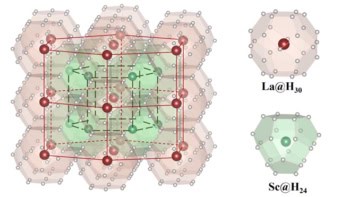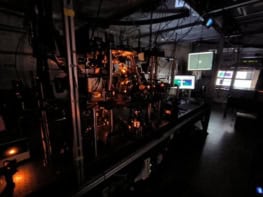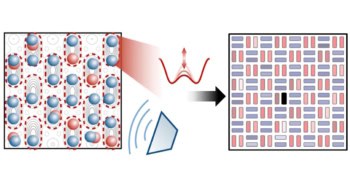Japanese physicists have shown that lithium becomes superconducting when it is subjected to pressures in excess of 30 gigapascals. Katsuya Shimizu of Osaka University and co-workers at Osaka and the University of Tokyo have shown that lithium loses all resistance to electric current at this pressure, which is equivalent to 300 000 atmospheres (K Shimizu et al. 2002 Nature 419 597). Researchers in the US have also observed superconductivity in dense lithium (V V Struzhkin et al. 2002 Science published on-line).
Some 29 elements are superconductors under normal pressure conditions, and lithium brings to 23 the number that superconduct at higher pressures. In high-pressure experiments the sample is compressed between two diamond surfaces in a diamond anvil cell. However, lithium is highly reactive, which makes high-pressure experiments difficult.
Shimizu and co-workers have now managed to compress a ribbon of highly pure lithium in such a cell. They observe superconductivity as a drop in electrical resistance, and also find that the superconducting transition temperature rises to 20 Kelvin at 48 gigapascals. Although this is the highest observed transition temperature of any element, it is a factor of four less than theoretical predictions. The team also points out that it has failed to observe the Meissner effect – the expulsion of a magnetic field from the sample. Observation of the Meissner effect is often considered a more reliable indication of superconductivity than a dramatic reduction in resistance.
Meanwhile Russell Hemley and co-workers at the Carnegie Institution of Washington in the US have also observed evidence for superconductivity in lithium at extreme pressures. Hemley and co-workers have measured both the electrical conductivity and magnetic susceptibility of lithium to pressures above 80 gigapascals, and have observed transition temperatures between 9 and 16 Kelvin – again much lower than theoretical predictions. However, both sets of results appear to confirm that tentative claims of superconductivity in lithium at high pressures by a group at the University of California at Los Angeles in the mid-1980s were correct.



